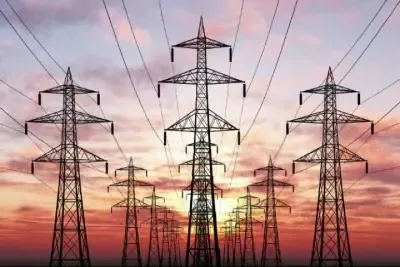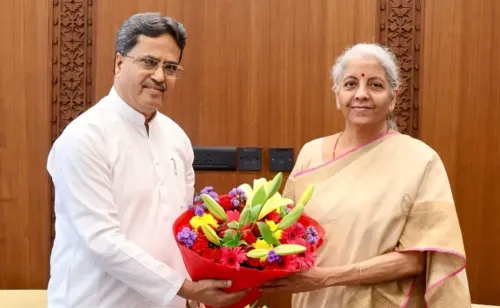How Are GEF and UNDP Supporting India’s Transition to a Circular Economy in the Electronics Sector?

Synopsis
Key Takeaways
- GEF and UNDP are leading a project to support India's transition to a circular economy.
- The initiative aims to manage e-waste responsibly and innovate in eco-design.
- Projected to benefit 6,400 people and reduce health risks.
- Funding includes $15 million from GEF and $105 million from Indian stakeholders.
- Addresses serious e-waste challenges in India, protecting both health and the environment.
New Delhi, Oct 13 (NationPress) With the rapid expansion of India’s electronics market, a significant initiative backed by the Global Environment Facility (GEF) and executed by the United Nations Development Programme (UNDP), in collaboration with the Ministry of Electronics and Information Technology, has been launched to guide the nation towards a circular economy in the electronics sector. This involves the environmentally responsible management of e-waste, a rapidly increasing waste stream in the country, as announced on Monday.
The five-year project aims to minimize the use of hazardous materials, recover valuable resources, and enhance resource availability within the electronics sector. It is projected to directly benefit 6,400 individuals and mitigate environmental and health hazards.
This initiative is expected to prevent the release of 8,000 tonnes of toxic heavy metals like mercury, lead, cadmium, and chromium; eliminate 25 tonnes of hazardous flame retardants; and reduce 600,000 tonnes of carbon dioxide-equivalent emissions.
“This project arrives at a crucial time when the Indian electronics industry is rapidly evolving. It will foster innovation in eco-design, recycling, and circular business models through collaboration with industry partners and stakeholders,” stated S. Krishnan, Secretary, MeitY.
“By advocating for circularity, we will enhance self-reliance in the supply chain of secondary raw materials, create new opportunities, strengthen livelihoods, and protect health and the environment,” Krishnan added.
India stands as the world's third-largest producer of e-waste. Over 80 percent of this waste is still handled informally using unsafe practices that release harmful chemicals into the environment. Formal recycling methods are limited, putting workers and communities at significant health risks.
“We are collaborating with government and industry partners to ensure efficient resource use, worker protection, and sustainable sector growth. Together, we can transform this challenge into an opportunity for a safer, more sustainable future aligned with India's vision for a circular economy,” remarked Angela Lusigi, UNDP Resident Representative in India.
The GEF has allocated $15 million in funding for this initiative, which will mobilize over $105 million in co-financing from the Government of India and industry stakeholders.
With a combined investment of $120 million, the project will enhance institutional mechanisms and enforcement of e-waste regulations, support innovation in eco-design and circular business models with manufacturers, pilot safe recycling and battery management systems, and improve infrastructure for valuable material recovery.
Xiaofang Zhou, Director of the UNDP Chemicals and Waste Hub, emphasized, “This influx of discarded devices contains toxic chemicals, including persistent organic pollutants (POPs), which do not decompose easily and cause long-lasting harm to ecosystems and human health.”
“UNDP collaborates with countries, the GEF, and industries to enhance policies that prevent hazardous chemicals in production, test safer recycling models, and recover valuable resources, all while ensuring the safety of workers and communities. Tackling e-waste is crucial for building the circular economy we need for a healthier planet,” Zhou concluded.








